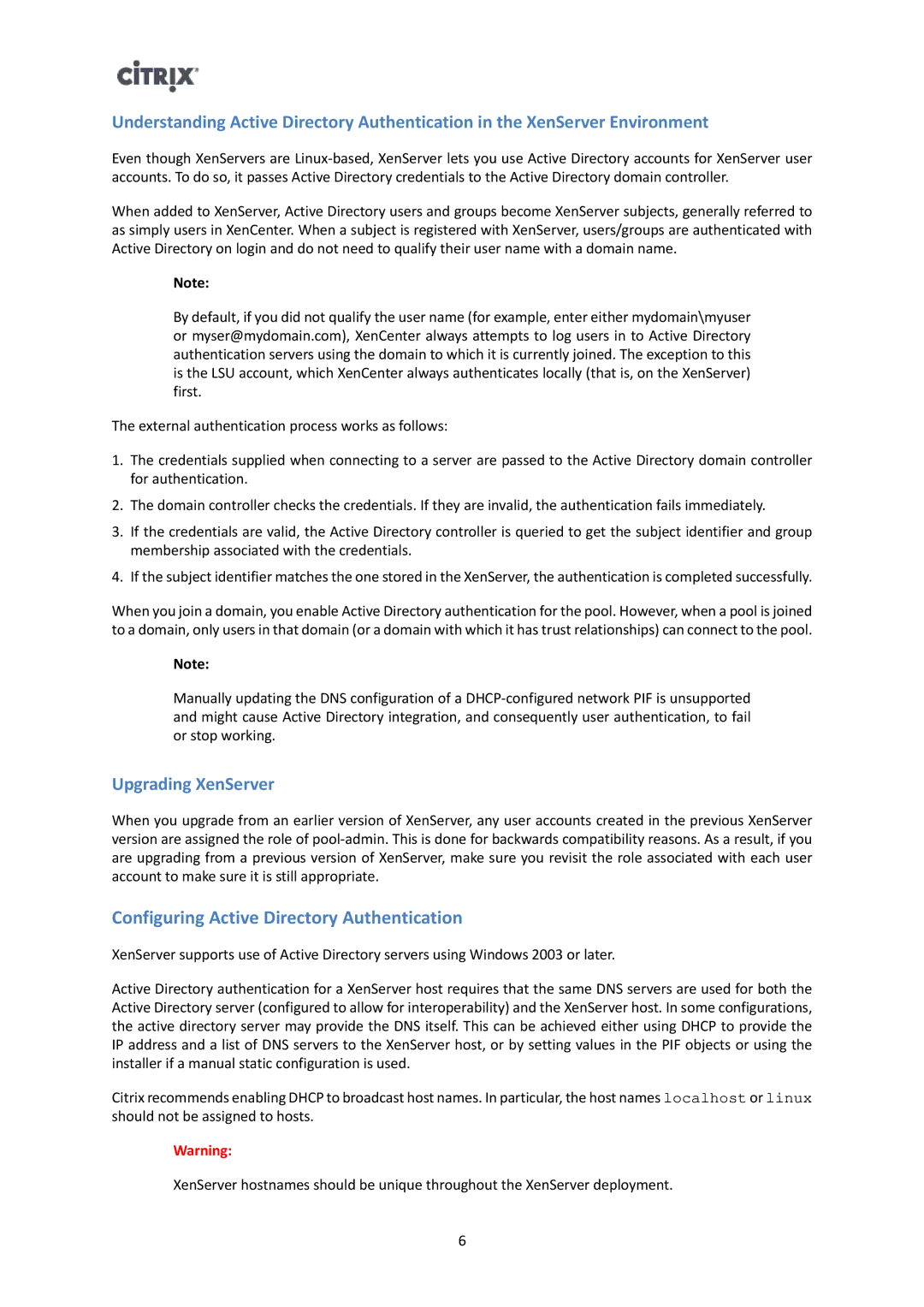Understanding Active Directory Authentication in the XenServer Environment
Even though XenServers are
When added to XenServer, Active Directory users and groups become XenServer subjects, generally referred to as simply users in XenCenter. When a subject is registered with XenServer, users/groups are authenticated with Active Directory on login and do not need to qualify their user name with a domain name.
Note:
By default, if you did not qualify the user name (for example, enter either mydomain\myuser or myser@mydomain.com), XenCenter always attempts to log users in to Active Directory authentication servers using the domain to which it is currently joined. The exception to this is the LSU account, which XenCenter always authenticates locally (that is, on the XenServer) first.
The external authentication process works as follows:
1.The credentials supplied when connecting to a server are passed to the Active Directory domain controller for authentication.
2.The domain controller checks the credentials. If they are invalid, the authentication fails immediately.
3.If the credentials are valid, the Active Directory controller is queried to get the subject identifier and group membership associated with the credentials.
4.If the subject identifier matches the one stored in the XenServer, the authentication is completed successfully.
When you join a domain, you enable Active Directory authentication for the pool. However, when a pool is joined to a domain, only users in that domain (or a domain with which it has trust relationships) can connect to the pool.
Note:
Manually updating the DNS configuration of a
Upgrading XenServer
When you upgrade from an earlier version of XenServer, any user accounts created in the previous XenServer version are assigned the role of
Configuring Active Directory Authentication
XenServer supports use of Active Directory servers using Windows 2003 or later.
Active Directory authentication for a XenServer host requires that the same DNS servers are used for both the Active Directory server (configured to allow for interoperability) and the XenServer host. In some configurations, the active directory server may provide the DNS itself. This can be achieved either using DHCP to provide the IP address and a list of DNS servers to the XenServer host, or by setting values in the PIF objects or using the installer if a manual static configuration is used.
Citrix recommends enabling DHCP to broadcast host names. In particular, the host names localhost or linux should not be assigned to hosts.
Warning:
XenServer hostnames should be unique throughout the XenServer deployment.
6
